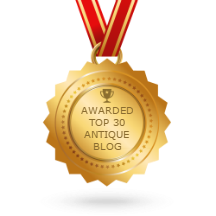An antique chair is one of those objects that we all know is a chair (duh) and yet we have a hard time describing its component parts.
I know this isn't a real big deal but it does reduce a lot of us to "ooga-booga cave speak" that no client or vendor understands even though many of us are college graduates and some even Phi Beta Kappas (or Kappa Kappa Gammas which are just as good).
Anyhow, describing chairs and their parts is easily solved by reviewing the following diagrams that show what words apply to what parts of different antique chairs.
Here's a diagram of a French Regence armchair with notations as to all of its parts:
If you'd like more chair terminology (since different chair eras have different chair parts), memorize the following diagrams and you'll practically have a PHD in "Seating Technology". Let's start with an English Queen Anne armchair:














4 comments:
What are the circular metal button-like things called...studs? In the first picture they would be where the apron meets the seat rail.
Dear Kashah-the technical name for these are "circular button things." Lol. Kidding--they're called simply nailheads and they come in a variety of sizes, finishes and shapes. When you see VERY LARGE ONES that are sparingly used on aprons and other antique parts, those big ones are called "clavos" or "bosses". And thanks for your question! Buzz
Many antique dinning room chairs (that do not have arm rests)have a brace that connects between the back and the seat of the chair. Is there a name for that chair part? Thanks.
Many antique dinning room chairs (that do not have arm rests)have a brace that connects between the back and the seat of the chair. Is there a name for that chair part? Thanks.
Post a Comment